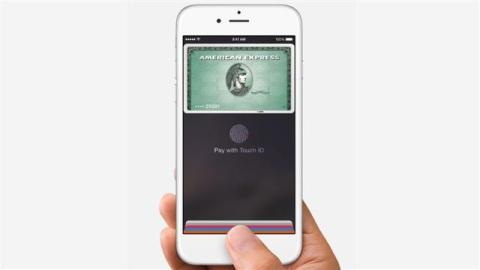- MENU
- HOME
- SEARCH
- WORLD
- MAIN
- AFRICA
- ASIA
- BALKANS
- EUROPE
- LATIN AMERICA
- MIDDLE EAST
- United Kingdom
- United States
- Argentina
- Australia
- Austria
- Benelux
- Brazil
- Canada
- China
- France
- Germany
- Greece
- Hungary
- India
- Indonesia
- Ireland
- Israel
- Italy
- Japan
- Korea
- Mexico
- New Zealand
- Pakistan
- Philippines
- Poland
- Russia
- South Africa
- Spain
- Taiwan
- Turkey
- USA
- BUSINESS
- WEALTH
- STOCKS
- TECH
- HEALTH
- LIFESTYLE
- ENTERTAINMENT
- SPORTS
- RSS
- iHaveNet.com: Stock Markets

Apple Pay, like other digital payment systems, is not immune to fraud, although it incorporates various security measures to protect users. Fraudsters often employ low-tech or traditional methods to exploit vulnerabilities in the system or target individuals. Here are some ways in which Apple Pay can be affected by low-tech fraudsters:
Stolen or Lost Devices
If a fraudster gains access to a user's iPhone or Apple Watch, they can potentially make unauthorized payments using Apple Pay. This can occur if the device is not protected by a passcode, Touch ID, or Face ID. Users are encouraged to set up these security features to prevent unauthorized access.
Stolen or Cloned Cards
Fraudsters may add stolen or cloned credit or debit cards to Apple Pay and use them for unauthorized transactions. Apple Pay employs tokenization, which replaces card numbers with unique tokens for added security. However, if a thief has access to the physical card, they may still attempt to use it.
Social Engineering
Fraudsters can use various tactics to manipulate individuals into sharing their Apple ID credentials or other sensitive information. Phishing emails, fraudulent websites, and social engineering techniques may be employed to trick users into revealing their login information.
Weak Passwords
If users have weak or easily guessable passwords for their Apple ID or associated email accounts, fraudsters may attempt to gain access to these accounts to add or manage cards on Apple Pay.
SIM Card Swapping
In some cases, fraudsters may attempt to convince a mobile carrier to swap the SIM card associated with a user's phone number to gain control of their device and associated Apple Pay accounts. Users should take steps to protect their mobile accounts and request additional verification for SIM card changes.
Receipt Fraud
Fraudsters can manipulate or forge digital receipts to show false or inflated transaction amounts. This can lead to unauthorized charges if users do not verify their transaction history.
To protect themselves from low-tech fraudsters and enhance the security of their Apple Pay accounts, users can take several precautions:
Set up strong passcodes, Touch ID, or Face ID on their devices.
Enable two-factor authentication (2FA) for their Apple ID.
Regularly review their transaction history to identify any unauthorized charges.
Only add trusted and legitimate payment cards to Apple Pay.
Be cautious when receiving emails or messages requesting sensitive information.
Report lost or stolen devices immediately to prevent unauthorized use of Apple Pay.
While Apple Pay incorporates advanced security features, users must also be vigilant and proactive in safeguarding their accounts and devices from fraudsters who may employ low-tech tactics.
"How to Protect Your Apple Pay from Low-Tech Fraudsters